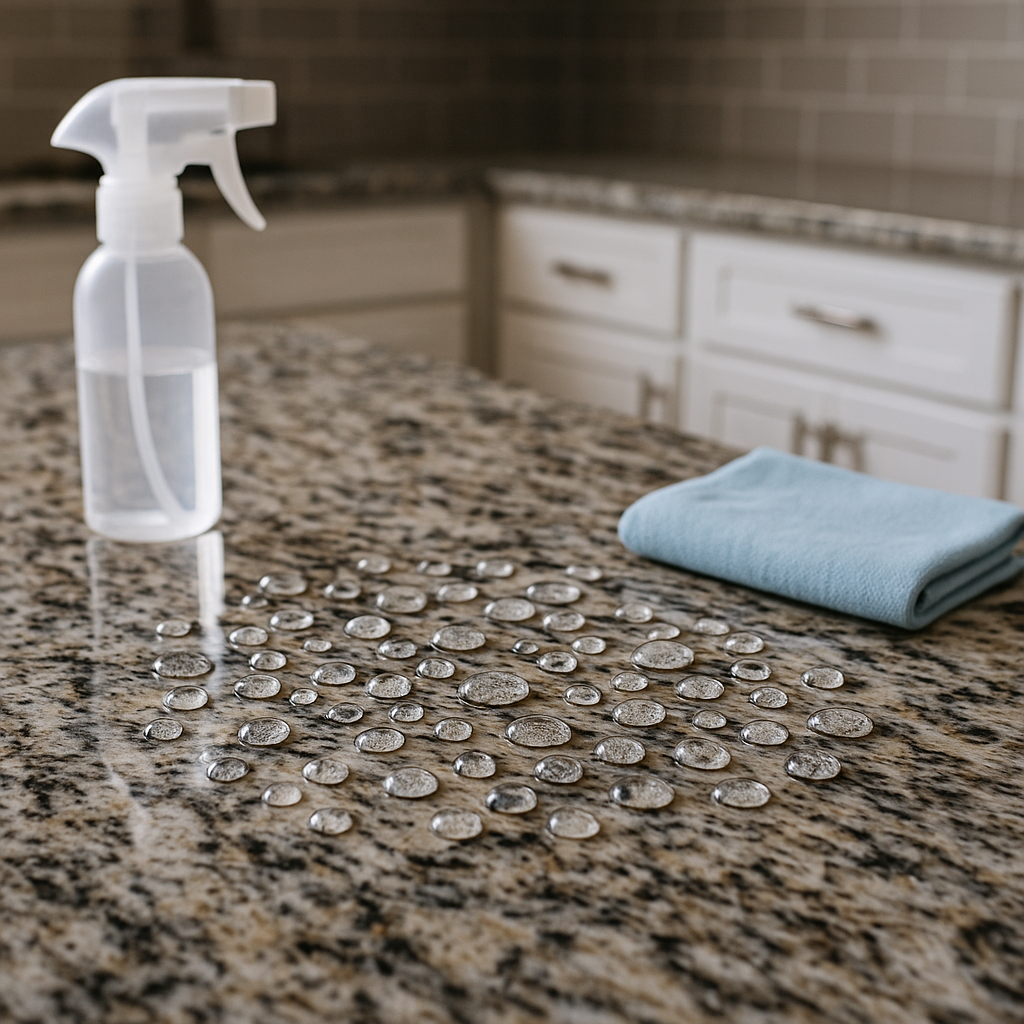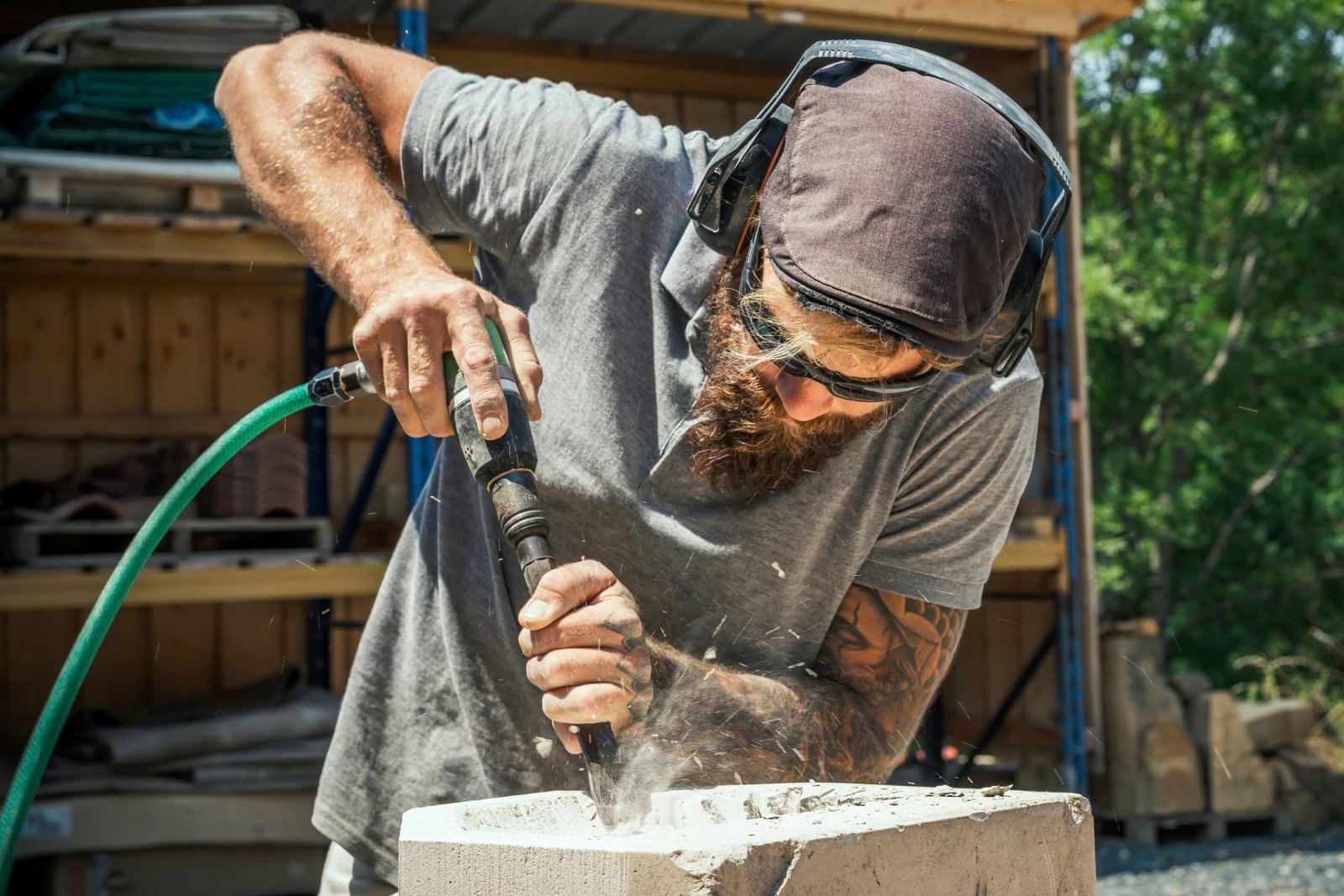
Granite countertop are renowned for their beauty, strength, and long-lasting appeal in kitchens and bathrooms.
Granite countertop are renowned for their beauty, strength, and long-lasting appeal in kitchens and bathrooms. As one of the most popular choices for homeowners and designers alike, a granite countertop delivers premium aesthetics and excellent durability. However, even the toughest natural stone needs regular care—especially sealing—to preserve its performance.
One of the most critical questions in granite countertop maintenance is: How often should a granite countertop be resealed to maintain its water resistance?
In this article, we’ll explore how sealing works, what factors affect resealing schedules, and how to tell when it’s time to reseal your countertop. Whether you’re investing in a new kitchen countertop or looking to protect an existing surface, this guide will help you ensure lasting protection and style.

Why Does Granite Need to Be Resealed?
Granite may look solid and impenetrable, but it’s a naturally porous material. Over time, water, oil, and acidic substances can seep into the surface if left unsealed, leading to:
- Staining and discoloration
- Bacterial growth
- Surface dulling
- Costly granite countertop repair
- Compromised structural integrity
Sealing prevents these issues by forming a protective barrier that repels moisture and contaminants. It enhances durability and helps preserve the vibrant granite countertop colors and natural patterns.
To understand who’s responsible for this task during and after installation, read:
👉 Who Is Responsible for Applying the Sealant on a Granite Countertop?
How Often Should You Reseal a Granite Countertop?
The short answer: Every 1 to 3 years, depending on several key factors.
Let’s break down the variables that influence resealing frequency.
1. Type and Color of Granite Slab
Not all granite slabs are created equal. The porosity of the stone greatly affects how often it needs to be resealed.
- Lighter-colored granite (white, beige, or light gray): Typically more porous. These slabs may need sealing every 6–12 months.
- Darker-colored granite (black, green, or deep gray): Denser and more resistant to moisture. These surfaces may only require sealing every 2–3 years.
Tip: Always ask your fabricator about the porosity of your specific slab during countertop installation.
2. Frequency of Use
A kitchen countertop in a busy household sees constant exposure to:
- Water and cooking oils
- Wine, juice, and acidic substances
- Daily cleaning products
High-use areas will break down sealant faster and may require annual sealing. Low-use areas, like guest bathrooms or decorative countertops, may need less frequent attention.
3. Cleaning Products Used
Harsh chemicals, vinegar, bleach, or ammonia-based cleaners can break down your sealant prematurely. If you’re not using a granite countertop cleaning solution that’s pH-neutral and stone-safe, your sealing may not last as long.
4. Initial Sealing Quality
During the initial countertop installation, professional installers usually apply a penetrating sealant. However, the quality and number of coats matter. If a thin or low-quality sealant was used, you’ll need to reseal sooner.
Find out how installers and homeowners share sealing duties here:
👉 Who Is Responsible for Applying the Sealant on a Granite Countertop?
How to Tell If Your Granite Countertop Needs Resealing
Perform the Water Test:
- Place a few drops of water on different sections of your granite countertop.
- Wait 10–15 minutes.
- If the water beads up, your sealant is still intact.
- If the water darkens the stone or soaks in, it’s time to reseal.
Other Signs You Need to Reseal:
- The granite looks dull, especially in high-use areas.
- Water rings or oil stains appear more frequently.
- The stone feels rough or sticky even after cleaning.
- You notice dark patches near the sink, cooktop, or seams.
Where Are the Most Critical Areas to Reseal?
While the entire surface should be sealed, some areas are more vulnerable to wear and water exposure:
- Sink cutouts and faucet holes
- Edges and overhangs
- Cooktop and appliance cutouts
- Seams between slabs
- Backsplash junctions
- High-traffic zones near prep areas
For a complete guide, see:
👉 Where Are the Most Critical Areas to Apply Sealant on a Granite Countertop?
Step-by-Step Guide: How to Reseal Your Granite Countertop
Tools You’ll Need:
- Granite-safe penetrating sealer
- Microfiber cloth or foam applicator
- Granite cleaner (pH-neutral)
- Clean towel or buffing pad
Instructions:
- Clean the Countertop Thoroughly
Use a stone-safe cleaner to remove dirt, oils, and residue. - Dry the Surface Completely
Let the granite air-dry for at least an hour or overnight. - Apply the Sealant Evenly
Spread a generous amount across the surface using a soft cloth or applicator pad. - Let It Absorb
Allow the sealant to sit for 10–15 minutes (or as recommended by the manufacturer). - Buff and Wipe Dry
Remove excess sealer and polish the surface with a clean towel. - Repeat if Necessary
For porous stones, a second coat may be required.
Choosing the Right Granite Sealant
There are several types of sealants on the market. Choose one that matches your needs:
- Penetrating Sealers (most common): Absorb into the granite for long-lasting protection without changing the appearance.
- Enhancing Sealers: Deepen the color and texture while providing moisture protection.
- Topical Sealers: Create a surface film and often require more frequent reapplication.
Ensure your product is:
- Food-safe
- Designed specifically for natural stone
- Water and oil resistant
Granite Countertop Maintenance Tips
To extend the life of your sealant and reduce the frequency of resealing:
- Clean spills immediately, especially oil or acidic liquids.
- Use cutting boards and trivets.
- Avoid harsh chemicals or abrasive pads.
- Clean with a granite-specific cleaner at least once a week.
- Perform a water test every 6–12 months.
Final Thoughts
Maintaining water resistance in your granite countertop isn’t just about appearance—it’s about preserving value, functionality, and hygiene. The general rule is to reseal every 1–3 years, but this depends on the color of your stone, how much it’s used, and how it’s maintained.
By understanding how often to reseal and paying close attention to high-risk areas, you can avoid unnecessary granite countertop repair, protect your investment, and ensure your kitchen countertop continues to shine for decades.

